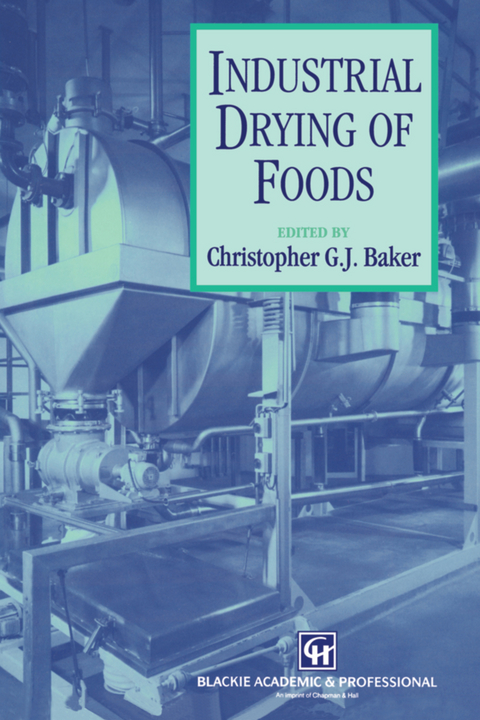
Industrial Drying of Foods
Springer-Verlag New York Inc.
978-1-4612-8428-4 (ISBN)
1 The industrial drying of foods: an overview.- 2 Drying fundamentals.- 2.1 Introduction.- 2.2 Basic dryer types.- 2.3 Thermodynamic properties of air-water mixtures and moist solids.- 2.4 Drying kinetics.- 2.5 Food quality parameters.- 2.6 Summary.- Acknowledgements.- References.- 3 Through-flow dryers for agricultural crops.- 3.1 Introduction.- 3.2 On-farm dryers.- 3.3 Commercial dryers.- 3.4 Dryer control.- 3.5 Design of through-circulation dryers.- 3.6 Crop quality and drying.- 3.7 Crop drying costs.- 3.8 Summary.- References.- 4 Fluidized bed dryers.- 4.1 Introduction.- 4.2 Basics of fluidization.- 4.3 Features of construction.- 4.4 Types of fluidized bed dryer.- 4.5 Operating considerations.- 4.6 Applications.- 4.7 Test procedures.- 4.8 Design methods.- Acknowledgements.- References.- 5 Spray dryers.- 5.1 Introduction.- 5.2 Spray drying principles.- 5.3 Spray dryer layouts.- 5.4 Meeting powder specifications.- 5.5 Special design features for hygiene and safety.- 6 Contact dryers.- 6.1 Introduction.- 6.2 Industrial equipment and applications.- 6.3 Theoretical overview of contact drying.- 6.4 Design of contact dryers.- Acknowledgements.- References.- 7 Freeze dryers.- 7.1 Introduction.- 7.2 Process overview.- 7.3 Description of the freeze drying process.- 7.4 Equipment.- 7.5 The cost of freeze drying.- 7.6 Freeze drying procedures.- 7.7 The packaging of freeze dried food.- 7.8 Conclusion.- References.- 8 Dielectric dryers.- 8.1 Introduction.- 8.2 The fundamentals of dielectric heating.- 8.3 Dielectric drying.- 8.4 Applications of dielectric heat in drying.- 8.5 Cost of RF and microwave dryers.- 8.6 Conclusions.- References.- 9 Specialized drying systems.- 9.1 Introduction.- 9.2 Pneumatic-conveying dryers.- 9.3 Spin-flash dryer.- 9.4 Rotary dryers.- 9.5 Tray and tunnel dryers.- 9.6 Band dryers.- References.- 10 Solar dryers.- 10.1 Introduction.- 10.2 Construction of solar dryers.- 10.3 Solar natural dryers.- 10.4 Semi-artificial solar dryers.- 10.5 Solar-assisted dryers.- 10.6 Economic evaluation of solar dryers.- 10.7 Design of solar dryers.- 10.8 Dryer operation and process control strategies.- References.- 11 Dryer selection.- 11.1 Introduction.- 11.2 Specification of the drying process.- 11.3 Preliminary dryer selection.- 11.4 Bench-scale tests.- 11.5 Economic comparison of alternatives.- 11.6 Pilot-plant trials and final selection.- 11.7 Typical examples of the use of the dryer selection algorithm.- 11.8 Summary.- References.- 12 Dryer operation and control.- 12.1 Introduction.- 12.2 Dryer operation.- 12.3 Safety, health and the environment.- 12.4 Dryer control and instrumentation.- References.
| Zusatzinfo | XXII, 309 p. |
|---|---|
| Verlagsort | New York, NY |
| Sprache | englisch |
| Maße | 155 x 235 mm |
| Themenwelt | Technik ► Lebensmitteltechnologie |
| ISBN-10 | 1-4612-8428-7 / 1461284287 |
| ISBN-13 | 978-1-4612-8428-4 / 9781461284284 |
| Zustand | Neuware |
| Haben Sie eine Frage zum Produkt? |
aus dem Bereich


